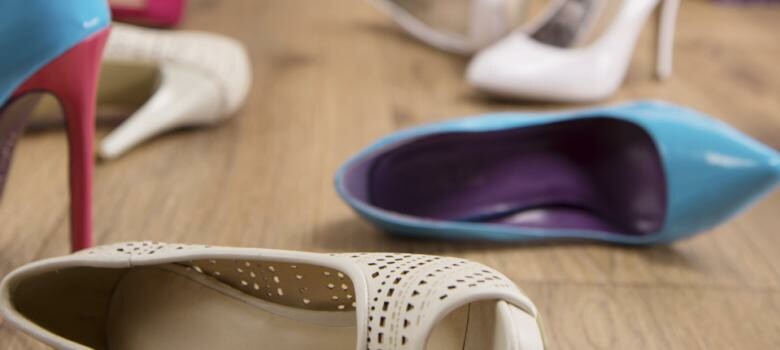 From the DukeHealth.org archives. Content may be out of date.
From the DukeHealth.org archives. Content may be out of date.
Small implant relieves big toe pain

Nichelle Perry
Big toe pain from arthritis kept Nichelle Perry from activities she loved. An artificial cartilage implant brought relief without limiting her range of motion.
Nichelle Perry likes to keep moving. “I exercise at least four times a week,” she said. “I do two days of spin and two days of either kettlebell or muscle pump.” The Durham resident and her husband bicycle, walk, and attend their two sons’ sports activities.
All that motion nearly came to a halt when Perry began suffering from big toe joint pain in her right foot. It was a familiar pain: Perry had surgery in 2007 for arthritis in her left big toe. But this time, the condition was worse. Her cartilage -- protective tissue between bones -- had worn away. The friction of bone rubbing against bone had created painful bone spurs.
“Plank exercises hurt, touching my big toe hurt. If I jumped the wrong way, I would torque it,” Perry said. “And sometimes, just standing up or walking was painful.”
Then there was the problem of footwear. “Any pressure on my big toe irritated the bone-spur area. There were two pairs of shoes that I could wear this summer, and they were sandals that I specifically bought because they didn’t even touch my big toe.”
Cooler weather was coming. Perry needed pain relief -- and the ability to wear closed shoes.
Typical big toe pain procedure limits motion
Duke orthopaedic surgeons have been helping Perry manage her big toe joint arthritis (called hallux rigidus) for quite some time. They had tried options such as anti-inflammatory creams and ointments, anti-inflammatory medications, stiff insoles, and steroid injections. She progressed well for a while, with pain that was tolerable, but, like all arthritis, it eventually gets to the point where quality of life is being affected. She needed surgery to restore her quality of life.
Until recently, the only long-term, reliable surgical option was fusion of the big toe, which immobilizes it. It’s been the gold-standard of treatment for decades, and patients get quite a bit of pain relief.
The downside is that you lose motion in the joint. Even though patients can run and jump, some activities -- like some poses in yoga and Pilates, or getting up on your toes to reach high shelves in your cabinets -- can be challenging. Some shoe wear, especially high heels, can be problematic.
Metal replacements for the big toe joint didn’t do well in long-term studies. And if those failed, there might not be enough bone left for a fusion procedure.
Perry wanted to avoid the limitations of fusion, so she lived with the pain as long as she could. Until, she said, “I couldn’t do the things I enjoyed. As it got to interfering with my lifestyle, I thought, ‘It’s time.’”

New implant relieves big toe joint pain, preserves motion
When Perry was finally ready, Duke surgeons had good news for her. The FDA had recently approved an artificial toe cartilage implant. It’s made from the same material as contact lenses and is sold under the brand name Cartiva.
The implant acts like a cushion or shock absorber between the two bones. Recent studies have shown that patients who get the implant feel similar pain relief to those who have big toe joint fusion, with the advantage that they maintain movement of the joint. It doesn’t give you full range of motion, but it’s better than the toe being locked into position.
The procedure is performed on an outpatient basis and has a shorter recovery time than fusion. If, for any reason, it doesn’t provide the needed relief, fusion is still an option. Because it doesn’t involve cutting away any bone, if you need to, you can always convert it to a fusion without much difficulty.
Perry was excited to learn of the new treatment option. “Since I had the opportunity, why not have them at least try and preserve the movement in my big toe?” she said.
Perry had the procedure in September 2016. “It was lickety-split,” she said. “I really didn’t notice anything, and I still don’t notice that the artificial cartilage is there.” For the first four weeks after receiving the implant, Perry wore a special boot to protect her foot. At six weeks, she was able to wear some types of shoes and had returned to exercising.
A self-described shoe lover, Perry said she’s confident she’ll be back to her full active lifestyle in just a short time. As for what she’s looking forward to: “Wearing cute boots,” she said. In fact, she had recently been shopping and spied a pair. “I tried them on. I wasn’t quite ready for them, but I bought them. I’m super excited.”


